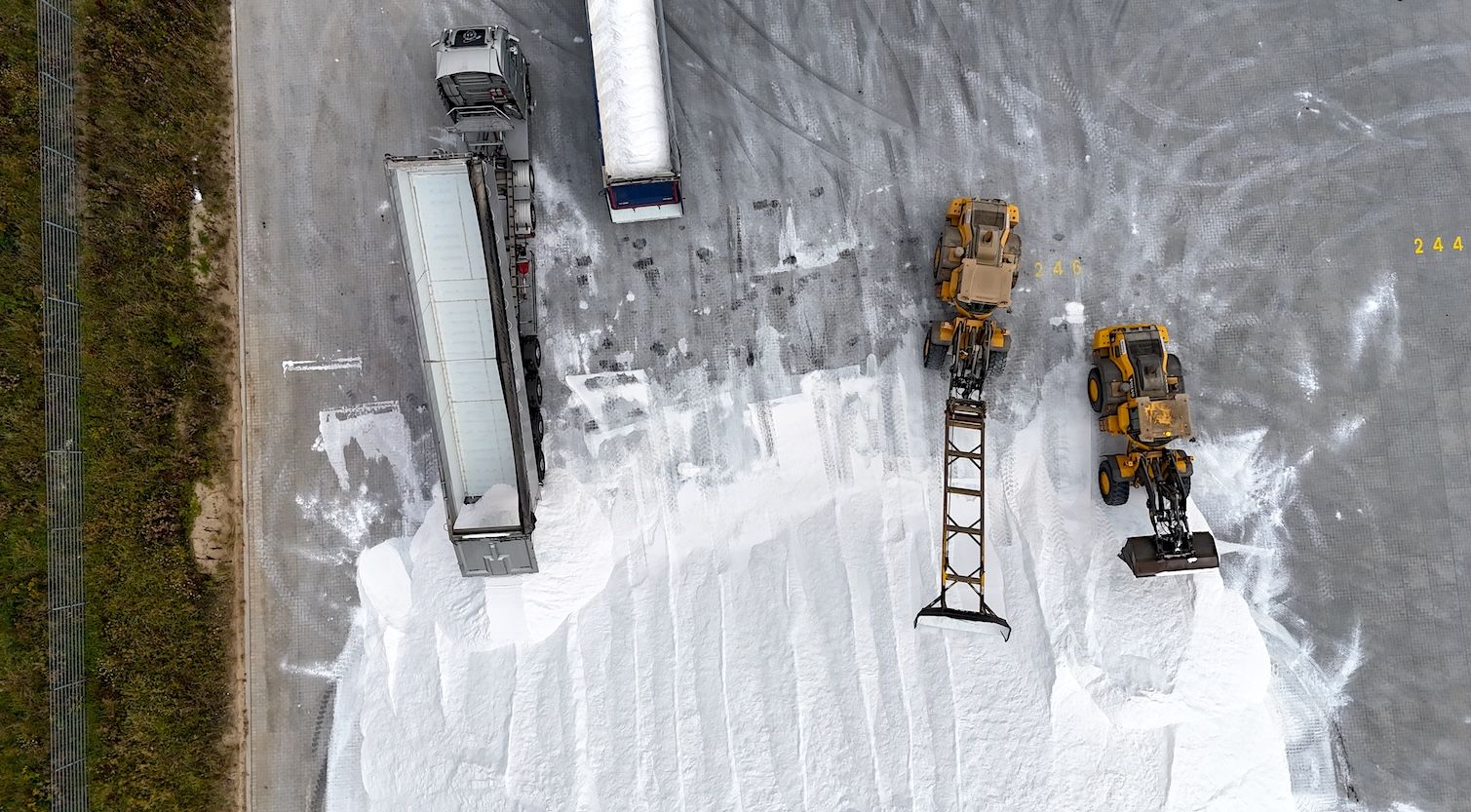Why Calcium Chloride is a better option
Both magnesium chloride and calcium chloride have the ability to attract and retain moisture from their surroundings. When comparing magnesium chloride with calcium chloride, we consider effectiveness at different temperatures, environmental impact, and costs.
Facts - These are the differences between magnesium chloride and calcium chloride:
- 1 kilo of calcium chloride absorbs 1.8 liters of water.
- 1 kilo of magnesium chloride absorbs 1 liter of water.
- Calcium chloride has 77% active substance for dust binding.
- Magnesium chloride has 47% active substance for dust binding.
- In a big bag of calcium chloride, there are 278 kg of calcium.
- In a big bag of magnesium chloride, there are 120 kg of magnesium.
- Thus, 1 kilo of calcium chloride can replace 2.3 kilos of magnesium chloride.
Order our calcium chloride for dust control here.
Effectiveness at different temperatures:
Calcium chloride is often preferred over magnesium chloride because it contains a higher percentage of active substances.
"This makes Calcium Chloride more effective at binding dust and melting snow and ice, even under cold temperature conditions from -6 to -40 degrees. At extreme cold, Magnesium Chloride is not as effective," says Anders Book, CEO of Saltimport.
Read more and order calcium chloride for ice removal here.
Environmental impact:
Magnesium chloride has a lower concentration of chloride, which may be less harmful to the environment in some contexts. However, the higher efficiency of calcium chloride may mean that less salt is needed, potentially reducing the overall environmental impact. In addition, there are lower CO2 emissions and more cost-effectiveness when the salt truck makes fewer rounds with calcium chloride than with magnesium chloride.
Read more about why to choose calcium chloride for dust control and snow melting.
Costs and volume:
Magnesium chloride is often cheaper to purchase, but calcium chloride is a more cost-effective solution in the long run due to its efficiency and longer duration of action. Comparing these two, you would need to salt twice with magnesium chloride to achieve the same effect as salting once with calcium chloride.
"If you're going to compare the price of magnesium chloride and calcium chloride, you should convert the prices to anhydrous goods. You do this by multiplying the price of MgCl2 by 2.12 and CaCl2 by 1.3," explains Andreas Magnus Grimelund, sales manager for road salt.
What is Magnesium Chloride?
Magnesium chloride (MgCl2) is a hygroscopic product consisting of magnesium and chlorine. This salt is used as road salt and is known for its ability to attract and retain moisture. Magnesium chloride is often used as a melting agent for ice and snow on roads. It is also used in dust control by binding dust particles together and preventing them from being stirred up by wind and traffic.
What is Calcium Chloride?
Calcium chloride is also a hygroscopic product that is widely used for its unique properties, especially in road maintenance and industry. Like magnesium chloride, calcium chloride is primarily used for dust control, and ice and snow melting due to its ability to attract and retain moisture, reducing dust formation on roads, construction sites, and in other environments.
Have questions about magnesium chloride and calcium chloride?








